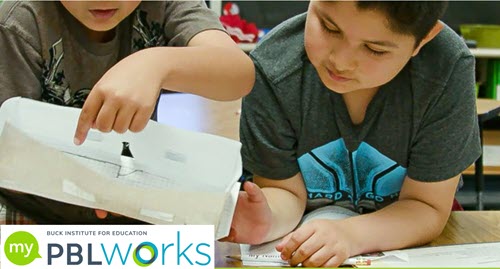If you’ve ever organized faculty development, you know the usual routine: run workshops, get sign-in sheets, and maybe send a feedback survey. While useful, these activities don’t always tell us the real story—are faculty actually applying what they learn, and is it improving the student experience? At Amity University Dubai (AMUD), we decided to find out. In 2021, our Centre for Teaching and Learning (CTL) created something new: the Faculty Development Index (FDI). It’s a simple points-based system that encourages, tracks, and rewards professional growth, not just attendance at events. Over time, it’s transformed the way our faculty approach teaching.
Here’s how it works, and how you can adapt it for your institution.
Why We Needed a Change
Before the FDI, our professional development (PD) efforts were mostly measured by how many sessions we ran and how many people showed up. We had no easy way to know whether faculty applied what they learned, which activities had the most impact, or how to encourage consistent growth. We wanted a system that did three things: measured the right things, not just attendance, motivated faculty to go beyond the “minimum” in PD, and promoted a culture of sharing, collaboration, and innovation.
The Faculty Development Index at a Glance
The FDI rewards faculty for a variety of activities. While participation in or leading workshops is included, it earns the lowest points to encourage faculty to go beyond traditional PD. Completing online courses like MOOCs is valued more highly, as is applying new skills in the classroom and sharing examples with colleagues. We also award points for collaboration across disciplines, for partnering with industry to create authentic learning opportunities, and for completing advanced training such as our “Train the Trainer” program. Each year, points add up, and the highest scorers receive Teaching Innovation Awards.
Step-by-Step: How We Built It
In the first phase, we started small by tracking workshop participation. This provided a baseline and gave everyone time to get used to the idea of a points system. However, we were clear that attending workshops alone wouldn’t be enough to score well.
The second phase added a focus on applying skills. Faculty were encouraged to share evidence—such as photos or short write-ups—on a dedicated WhatsApp group called *Sharing Best Practices*. This real-time, peer-to-peer sharing helped spread good ideas quickly and made it easy for colleagues to adopt them.
The third phase introduced points for interdisciplinary and industry-linked projects. This encouraged faculty to co-teach modules, develop cross-program assignments, and partner with companies for real-world student projects. To make this practical, we provided examples of what counted as qualifying projects so faculty could see tangible ways to participate. Finally, in the fourth phase, we added MOOCs and our “Train the Trainer” program. We curated a list of high-quality MOOCs and developed a 12-hour blended learning course covering lesson planning, active learning, motivation, and assessment. To ensure relevance, we established a review process for MOOCs and scheduled “Train the Trainer” sessions during times that suited participants.
Practical Benefits for Teaching
The FDI isn’t just about points—it’s designed to improve everyday teaching. Faculty began to design courses with clearer learning outcomes, more authentic assessments, and stronger connections between theory and practice. In the classroom, active learning became more common, with examples ranging from case-based debates in business programs to hands-on prototype building in engineering courses. Class participation grew as faculty introduced strategies like “minute papers,” think-pair-share exercises, and role plays.
Assignments shifted towards more collaborative, project-based formats, often linked to industry input. Online teaching practices improved too; faculty became more confident in using breakout rooms, polls, and flipped classroom videos. Grading and feedback evolved with greater use of rubrics, audio comments, and peer review tools, making assessments more transparent and constructive. Teaching with technology expanded as faculty explored interactive whiteboards, quiz apps, and other digital tools.
Results We’ve Seen
The results have been encouraging. Student satisfaction with teaching quality increased notably in the past two years, which had a noticeable impact on student attrition and complaints. Faculty engagement in professional development grew, with more examples of sharing and collaboration visible in our community. We also noticed improved retention of faculty, suggesting higher job satisfaction and a stronger commitment to the institution.
Challenges and How We Solved Them
Of course, there were challenges. Some faculty were initially resistant, seeing the FDI as added administrative work. We addressed this by keeping reporting requirements light and highlighting early success stories. Industry engagement posed another hurdle; many faculty lacked local contacts, so we ran orientation sessions with our Job Placement Office to help them connect with potential partners. Scheduling conflicts were also a problem for the “Train the Trainer” program, which we resolved by building workshop time into participants’ timetables.
How You Can Adapt the FDI
If you want to create something similar, start by identifying the teaching behaviors you most want to encourage. Build a points system that rewards those activities more generously than routine ones. Provide a platform where faculty can easily share successes, whether that’s a chat group, internal blog, or quick video channel. Recognize and celebrate achievements publicly, and review your system regularly to keep it relevant and motivating.
Final Thoughts
The FDI has proven to be more than a tracking tool—it’s a shift in mindset. Faculty now view professional development as an ongoing, collaborative process that directly benefits their students. If you’re looking to refresh your approach to faculty development, start small, keep it practical, and make it rewarding. The results—both in faculty engagement and student learning—are well worth the effort.
References
Adams, S. R., and E. K. Mix. 2014. “Taking the Lead in Faculty Development: Teacher Educators Changing the Culture of University Faculty Development through Collaboration.” *AILACTE Journal*, 37–56.
Brouwer, N., G. Fleerackers, I. Maciejowska, C. McDonnell, and M. Mocerino. 2022. “The Impact of a Professional Development MOOC on the Teaching Beliefs of University Science Laboratory Teachers.” *Chemistry Teacher International*, 355–376.
Guskey, T. R. 1986. “Staff Development and the Process of Teacher Change.” *Educational Researcher*, 5–12.
McCrickerd, J. 2012. “Understanding and Reducing Faculty Reluctance to Improve Teaching.” *College Teaching*, 56–64.



















